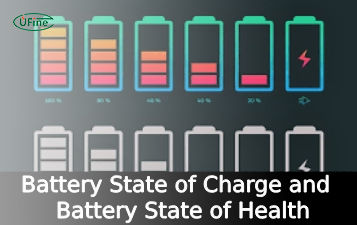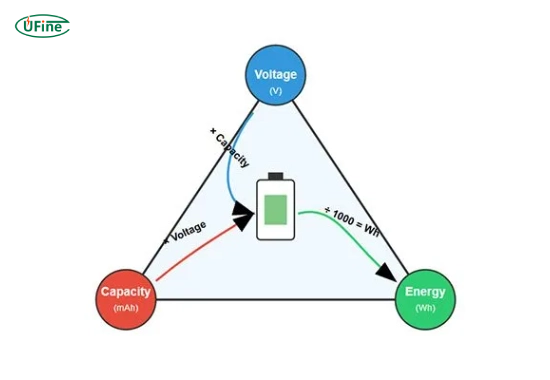
- Part 1. What is a battery discharge calculator?
- Part 2. Why runtime estimation matters for lithium batteries?
- Part 3. Key inputs you need to calculate lithium battery runtime
- Part 4. How to calculate battery discharge and runtime?
- Part 5. Common pitfalls in battery discharge calculations
- Part 6. Expanded real-world examples
- Part 7. Applications across industries
- Part 8. How to choose a good battery discharge calculator?
- Part 9. Tips to improve calculation accuracy
- Part 10. FAQs about battery discharge calculator
- Part 11. Checklist to start today
A battery discharge calculator is an essential tool for anyone using lithium batteries in off-grid power systems, drones, RVs, boats, robotics, or portable electronics. This guide explains how to calculate runtime, what key inputs you need, and how to avoid common mistakes. It uses clear formulas, real-world examples, and actionable tips so you can plan your battery usage with confidence.
Part 1. What is a battery discharge calculator?
A battery discharge calculator is a tool—digital or manual—that estimates how long a battery can power a device based on its capacity, voltage, and the load it supports.
The basic principle is:
Runtime (hours) = Usable energy ÷ Power consumption
Where:
- Usable energy depends on battery capacity (Ah or Wh), depth of discharge (DoD), and system efficiency.
- Power consumption is the device’s load in watts or amps.
Why it matters:
- It helps design systems like solar energy storage, RV power banks, and drone setups.
- It prevents over-sizing (unnecessary cost and weight) or under-sizing (unexpected shutdowns).
- It’s useful for comparing battery chemistries such as LiFePO4, NMC, and LTO.
Two main types of calculators:
- Basic calculators – Input a few values (capacity, voltage, load) for a quick estimate.
- Advanced calculators – Allow for variable loads, temperature effects, and inverter losses.
Part 2. Why runtime estimation matters for lithium batteries?
Lithium batteries are widely used because they are lightweight, high-capacity, and long-lasting. However, runtime estimation is crucial for:
- Safety – Avoids complete discharge, which can shorten lifespan or damage the battery.
- Performance planning – Ensures your system meets its operational needs, especially in remote locations.
- Cost optimization – Right-sizing avoids overspending on excess capacity.
- Energy efficiency – Helps you match battery capacity to actual needs, reducing waste.
Real-world impact:
- Drone operators rely on precise runtime estimates to avoid mid-air shutdowns.
- Sailors need accurate calculations to keep navigation, lighting, and communication running.
- Off-grid homeowners plan solar charging and usage schedules based on runtime estimates.
If you run mission-critical equipment or live in areas with unstable power, accurate runtime predictions are non-negotiable.
Part 3. Key inputs you need to calculate lithium battery runtime
- Battery capacity
- Measured in amp-hours (Ah) or watt-hours (Wh).
- Example: 100 Ah × 12 V = 1200 Wh.
- Battery type and chemistry
- LiFePO4, NMC, LTO, etc.
- Each has different efficiency, discharge curves, and recommended DoD.
- Nominal voltage and voltage range
- A 12 V LiFePO4 typically operates between 10.5–14.6 V.
- Voltage sag under high loads should be considered.
- Load profile
- Continuous or variable loads in watts or amps.
- Multiple devices require summing loads or using a time-based model.
- System efficiency
- Inverters, DC-DC converters, and cabling all introduce losses.
- Common efficiency range: 85–95%.
- Depth of discharge (DoD)
- The usable portion of the battery before recharging.
- Many lithium users choose 70–80% for longer life.
- Temperature effects
- Cold and heat can reduce capacity by 10–30%.
- Peukert’s effect (optional)
- More relevant for lead-acid, but can slightly affect high-drain lithium applications.
Core inputs to always include:
Capacity, voltage, load, efficiency, DoD.
Part 4. How to calculate battery discharge and runtime?
There are two main calculation approaches:
1. Constant load method
Best for stable, predictable power usage.
Formula in Wh:
Runtime (h) = (Capacity in Wh × DoD) ÷ (Load in W × Efficiency)
Formula in Ah:
Runtime (h) = (Capacity in Ah × Voltage × DoD) ÷ (Load in W × Efficiency)
Example:
- Capacity: 100 Ah
- Voltage: 12 V
- DoD: 80%
- Load: 25 W
- Efficiency: 90%
- Runtime = (100 × 12 × 0.8) ÷ (25 × 0.9)
- Runtime = 960 ÷ 22.5 ≈ 42.67 h
2. Variable load method
Best for devices with on/off cycles, peak surges, or solar charging inputs.
Steps:
- Break the day into time segments with different loads.
- Calculate Wh used in each segment.
- Sum total Wh consumption.
- Apply efficiency and DoD to find runtime.
Tip: This approach is more accurate for fridges, pumps, or hybrid solar-battery systems.
Part 5. Common pitfalls in battery discharge calculations
Avoid these mistakes:
- Ignoring DoD policies – Over-discharging reduces lifespan.
- Skipping inverter losses – Can shorten runtime by 10–15%.
- Not accounting for surge currents – Startup spikes can drain capacity faster.
- Mixing units – Always match Wh with watts, Ah with amps.
- Overlooking temperature impacts – Especially in outdoor or uninsulated setups.
- Assuming constant load – Real-world usage varies.
Part 6. Expanded real-world examples
Example 1: Off-grid cabin
- Battery bank: 240 Ah × 12 V = 2880 Wh
- DoD: 80% → 2304 Wh usable
- Load: lights (8 W × 24 h = 192 Wh), fridge (60 W × 12 h = 720 Wh), device charging (40 W × 6 h = 240 Wh)
- Total load/day = 1152 Wh
- Runtime = 2304 ÷ 1152 ≈ 2 days without charging.
Example 2: Drone mission
- Battery: 6S 10 Ah Li-ion (22.2 V nominal) = 222 Wh
- DoD: 90% → 199.8 Wh usable
- Load: 25 W flight system
- Runtime = 199.8 ÷ 25 ≈ 8 hours theoretical — but actual flight is only 40 min due to high drain and safety margins.
Part 7. Applications across industries
- Renewable energy – Solar + battery sizing
- Marine & RV – Overnight appliance power
- Telecom – Backup for towers and remote stations
- Filmmaking – Portable battery packs for cameras and lights
- Emergency response – Off-grid communications equipment
Part 8. How to choose a good battery discharge calculator?
Look for:
- Clear, labeled inputs
- Support for multiple chemistries
- Efficiency and temperature adjustments
- Step load modeling
- Transparent formulas
Part 9. Tips to improve calculation accuracy
- Use manufacturer test data instead of marketing specs.
- Apply realistic efficiency factors.
- Model variable loads where possible.
- Test in real conditions.
- Include a 10–20% safety margin.
Part 10. FAQs about battery discharge calculator
Why does efficiency matter in runtime calculations?
Efficiency accounts for losses in wiring, regulators, and inverters. It can make a big difference in the final result.
Should I use DoD in every calculation?
If you plan to protect battery life, yes. DoD represents how much energy you are willing to use.
Do temperature effects matter for lithium batteries?
Yes. Temperature can reduce available capacity and efficiency, especially in high heat or cold.
Is it enough to know Ah to estimate runtime?
Not alone. You also need voltage, load, and efficiency to convert Ah to usable energy.
Can I use a battery discharge calculator for solar powered setups?
Yes. It helps size the battery bank and plan charging times relative to solar input.
How does startup surge affect runtime?
A surge uses extra energy at start up, which can shorten average runtime if not accounted for.
Should I always target 100% DoD?
No. For longer battery life, many users limit DoD to 80% or less.
Part 11. Checklist to start today
- Get battery specs (capacity, voltage, chemistry)
- List all loads in watts
- Decide DoD policy
- Include system losses
- Run calculations
- Compare with real-world testing
Final takeaway:
A battery discharge calculator is more than a math tool—it’s a planning asset for maximizing battery life, saving costs, and ensuring your devices never run out of power unexpectedly.
Related Tags:
More Articles

Battery State of Charge and Battery State of Health
Battery SoC vs. SoH explained: Learn professional methods to measure charge levels, test health status, and optimize battery performance for longer lifespan.
Difference Between 18650, 26650, and 21700 Batteries
What’s the difference between 18650, 21700, and 26650 batteries? Compare size, capacity, and performance to find the best lithium battery for your device.
LFP Battery Vs. LTO Battery: A Detailed Comparison
Compare LFP (LiFePO4) and LTO (Lithium Titanate) batteries by energy density, lifespan, safety, cost, and uses in EVs, solar storage, and backup power.
Compare 18650 battery types: Li-ion, LiFePO4, and LiPo. Key specs (voltage/capacity) and best uses for vapes, flashlights, EV batteries.
How to Distinguish Between Grade A, Grade B, and Grade C LiFePO4 cells?
Explore the differences between Grade A, B, and C LiFePO4 cells and learn how to choose the right one for electric vehicles, solar storage, or backup power.



